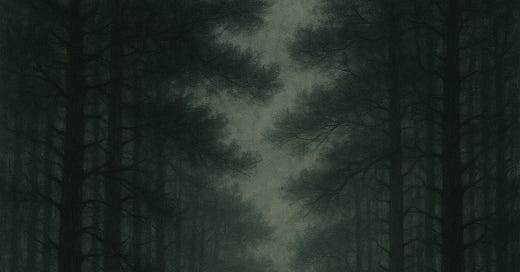Deep within the dense forests of Rothiemurchus, where the pines murmur secrets to the wind and the undergrowth clings like memory, lies an ancient path known as the Rathad-na-Meirlich—the “Street of the Thieves.” Worn not by boots of hikers, but by the hooves of stolen cattle and the feet of Highland raiders, this hidden route tells a darker tale of the Cairngorms. It is not marked on most maps, nor widely discussed, but it once served as a vital artery of crime in medieval Scotland—a covert channel for the highland reivers who bled Speyside of its livestock and vanished into the mists with their plunder.
The path winds east of the lesser-known Loch Gamhna—“the Loch of the Calves”—a name that hints at its past. It was here that rustlers gathered the stolen cattle from lowland farms, staging before their final drive south. Its very soil is saturated with the hurried hoofbeats of centuries past.
Rob Roy and the Speckled Laird: A Pact of Necessity
Among those who traversed this forest path was none other than Rob Roy MacGregor—the legendary outlaw, hero, and thorn in the side of the law. During one such foray, he is said to have marched along the Thief’s Street with a band of MacGregors, bringing more than just menace—he brought survival and political leverage.
At the time, Patrick Grant of Rothiemurchus—known locally as MacAlpine—was embroiled in a bitter feud with his neighbor, Mackintosh, who had built a mill that threatened the local water flow. When threats turned toward violence, it was Rob Roy who intervened. Meeting Mackintosh’s men near the disputed mill, he routed them, torched the structure, and penned a scathing Gaelic warning: attack Rothiemurchus again, and your land will burn.
The mill, the “Moulin Dhu” (Black Mill), gave its name to a fiery reel tune still played today. A melody forged not in celebration, but in scorched turf and retribution.
Forests of Fire and Remnants of Raids
The forest has changed much since those days, but the echoes remain. Until recently, an old fir tree still stood, gnarled and scarred, where the Speckled Laird once tethered “protection bulls” as tokens of immunity to the raiders. Local tradition held that this symbolic act spared his herds from theft even as others’ livelihoods vanished overnight. It was a pact sealed not with words, but with understanding—a handshake in bark and pine sap.
This historic tree was eventually lost in a devastating forest fire, one that razed many of Rothiemurchus’ ancient woods. Yet in that destruction came revelation: the fire stripped away underbrush and decay, revealing the bare contours of forgotten roads, overgrown cairns, and even possible remnants of stone alignments—perhaps waymarkers for thieves navigating in moonlight.
Even the soil bears witness. Along the old trail, fragments of iron shoe nails and rusted bridle hooks have been found by local historians, relics of a lawless past where a path was not merely a route—but a livelihood.
Whispers Beneath the Pines: Nature Reclaims the Past
Today, the Thief’s Street is mostly silent. Its russet pine-needle carpets are soft underfoot, and the forest has grown thick around it, as if trying to erase its memory. But the past resists burial. In certain light, especially at dusk, the trail’s unnatural straightness becomes visible, slicing through the wilderness like a forgotten scar. The wind carries stories—of stolen herds driven under starlight, of secret alliances and outlaw justice, of hills that once echoed with hooves and highland curses.
The path’s location is known to a few, traversed only by deer and the occasional curious soul. Yet for those who walk it with open ears, the Thief’s Street speaks volumes. It tells us that even in a place as breathtakingly beautiful as Rothiemurchus, history was not only written in poetry and prayer—but in crime and cunning, blood and shadow.





